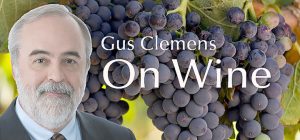Grapes are grown, harvested, fermented, aged. Time to make the final product.
Most wines are blends. They may be a blend of the same varietal, and therefore listed as—say—100% pinot noir. But, except for very low production efforts, the wine is made in different vessels and grapes come from different locations in the vineyard or even from scattered vineyards.
Winemaker talent now comes into play. Blending wine is more a skill of appreciating wine texture and taste on your palate rather than aroma in your nose. There also is challenge of matching supplies of a certain wine with subtle qualities with its twin/brother/first cousin with other subtle qualities. Art, not science.
When wine blends are made with different varieties sometimes the amount of one variety can be as little as one percent. How is that perceptible? To a skilled winemaker it is, even if that is way above your or my pay grade.
Bordeaux red is classic. The main ingredients are cabernet sauvignon, merlot, and cabernet franc. Cabernet sauvignon delivers depth, richness, concentration, longevity. Merlot plushness, suppleness, medium weight. Cabernet franc intensity, body, dark color. Together, sometimes abetted by petite verdot, malbec, and carmenére, they make a blend admired and imitated around the world.
We are almost to finished wine. Most wineries now add clarifying or “fining” agents to remove suspended proteins, which can make the wine cloudy. Casein or eggs whites commonly are used, but a growing number of winemakers now use bentonite clay because it is vegan. After fining, many wines pass through a filter for sanitation to reduce likelihood of bacterial spoilage.
Some winemakers skip fining and filtration because they believe it removes textures and quality. That is not a scientific certainty, but those who do not fine and/or filter often brag about it on their label.
Time to bottle and label. It is important in this final step to expose the wine to as little oxygen as possible. A small amount of sulfur dioxide may be added to preserve the wine, especially white wines.
Labeling, with its bureaucratic hoops and rules comes last. It can happen some time after bottling, when the wine is ready for sale, so labels will be pristine. It has been four years since you bought land and planted vines. Now you pray for your first sale.
Last round: What do you call a fish with no eyes? A fsh. White wine often goes better with fsh than red.

